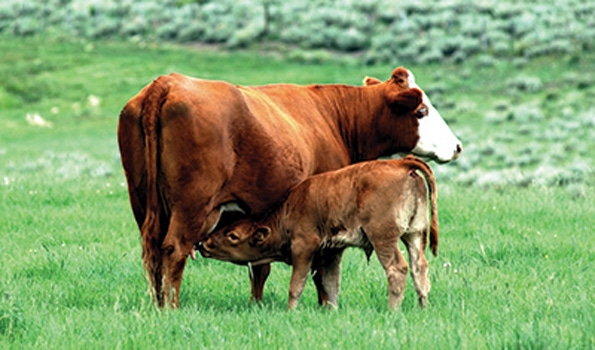Help clients prepare for successful preconditioning this fall to improve animal health and well-being.
July 21, 2016

Sponsored Content
Importance of preconditioning
Now is the time to help your clients prepare for successful preconditioning this fall. Preconditioning calves before entering the feedlot improves their health and well-being while enhancing the profitability for the cow/calf and feedlot owner.
“When we go from the cow/calf to the feedlot, animals are experiencing a new and different environment,” said W. Mark Hilton, D.V.M., DABVP and Elanco technical consultant. “It benefits everyone to have a healthy animal, so it’s important we do everything we can to start the animal off right.”
Hilton suggests that you help cow/calf producers focus on their calves having a successful transition to the feedlot and trying to reduce disease to nearly non-existent. “Minimizing disease is beneficial for all parties — cow/calf and feedlot producers — and helps us provide a healthy protein source for consumers,” said Hilton.
The basics of building a preconditioning program
A successful transition is impacted by several factors, including vaccination, nutrition, environment and genetics.
“One small issue won’t cause a disaster, but those small issues can add up quickly and turn into a disaster. So, it’s critical we do everything we can to be successful,” said Hilton.
From a nutritional standpoint, Hilton recommends that you specifically help your clients manage cattle nutrition. The industry continues to learn more about the importance of nutrition in overall health. For instance, starting off with proper nutrition will likely lead to a better vaccine response.
“From a health perspective, you need to help the immune system be ready to face diseases it’s likely to encounter,” said Hilton. “Help your clients decide what those important vaccines are, starting with a product that covers IBR and BVD and making sure you cover any other diseases that typically impact your region.”
Timing is critical
“Setting up a health protocol — including vaccines — is critical because we should not be giving all vaccines at weaning time, as that puts more stress on the animals,” said Hilton. “We know that weaning and preconditioning for at least 45 days on the farm or ranch of origin is the most important factor in ensuring health at the feedlot.”
Typical timing for vaccine protocols often include:
Branding (2 to 3 months old) — administer first respiratory vaccine and return the animals to the environment they came from
Two to three weeks before weaning — consider other vaccines to cover regional diseases and, potentially, the second respiratory vaccine
Weaning — implement the second respiratory vaccine (if not completed pre-weaning) and parasite control
“Once calves are weaned, they should be on the farm or farm of origin for at least 45 additional days before moving them to the feedlot. During those 45 days, calves tend to gain weight very well — around 2.5 to 3 lbs per day,”1 said Hilton.
Profitability of preconditioning
Though nearly every study shows that feedlot producers are financially rewarded for purchasing healthier calves, some cow/calf producers ask if they receive the same financial benefits.2 In an 11-year study, as average daily gain increased, profits continued to grow.1 The net return per calf from preconditioning was approximately $80 in a study from 1999-2009.1
“In all 11 years, cattle earned a profit when good preconditioning practices were followed.1 It’s not a guarantee that your client will make money, but the odds of making money with a good preconditioning program are more likely than not,” said Hilton. “From a health standpoint, preconditioning is always positive for the calf and typically is financially rewarding for both cow/calf and feedlot producers. Be sure you’re helping clients stack the deck in their favor so everyone can be as successful as possible.”
Elanco now offers a full line of health management products — including Titanium®, Vira Shield® and Scour Bos® — to meet your herd’s needs for a successful preconditioning program. Reach out to your Elanco sales representative or visit Elanco.us to learn more.
“As margins tighten for the cow/calf producer, it makes sense for them to “own” the calf for a few extra weeks to improve its health and add dollars to their bottom line,” said Hilton. “With the feedlot owner receiving a healthier calf, preconditioning becomes a win-win-win situation.”
The labels contain complete use information, including cautions and warnings. Always read, understand and follow the label and use directions.
1Hilton, M., Olynk, N. 2011. “Profitability of Preconditioning: Lessons Learned from an 11-Year Case Study of an Indiana Beef Herd.” The Bovine Practitioner. 45:1.
2Hilton, M., Olynk, N. 2011. “Managing Your Beef Herd: Highlighting Key Determinants of Success in Preconditioning.” Purdue Extension.
Elanco®, Scour Bos®, Titanium®, Vira Shield® and the diagonal bar are trademarks owned or licensed by Eli Lilly and Company, its subsidiaries or affiliates.
© 2016 Eli Lilly and Company, its subsidiaries or affiliates.
USBBUMUL01732​
You might also like:
4 facts to debunk "Meat is horrible" article
60 stunning photos that showcase ranch work ethics
Best risk strategy options for cattle producers
Does it really take six years to cover your costs on a cow? NO!
Photo Gallery: Get to know the 2016 Seedstock 100 operations
You May Also Like



